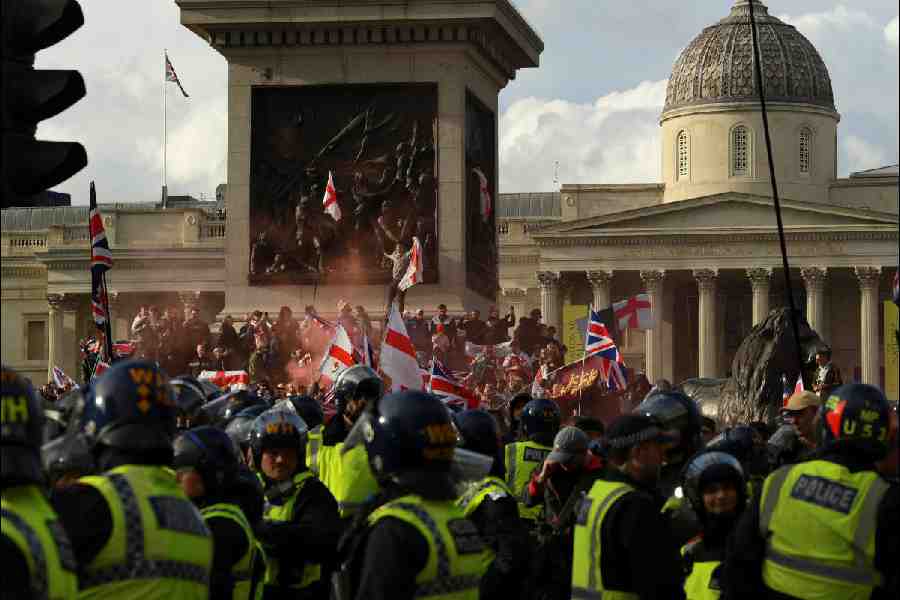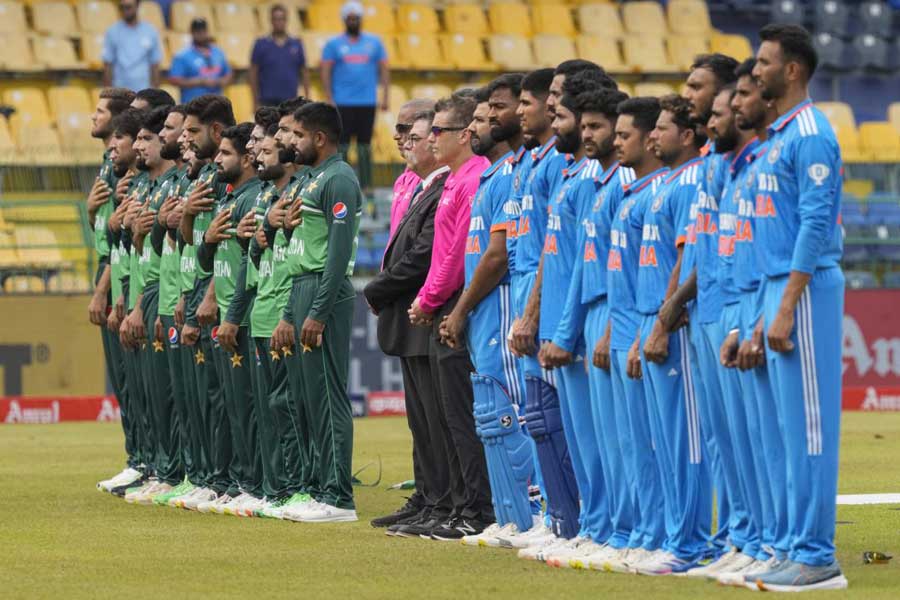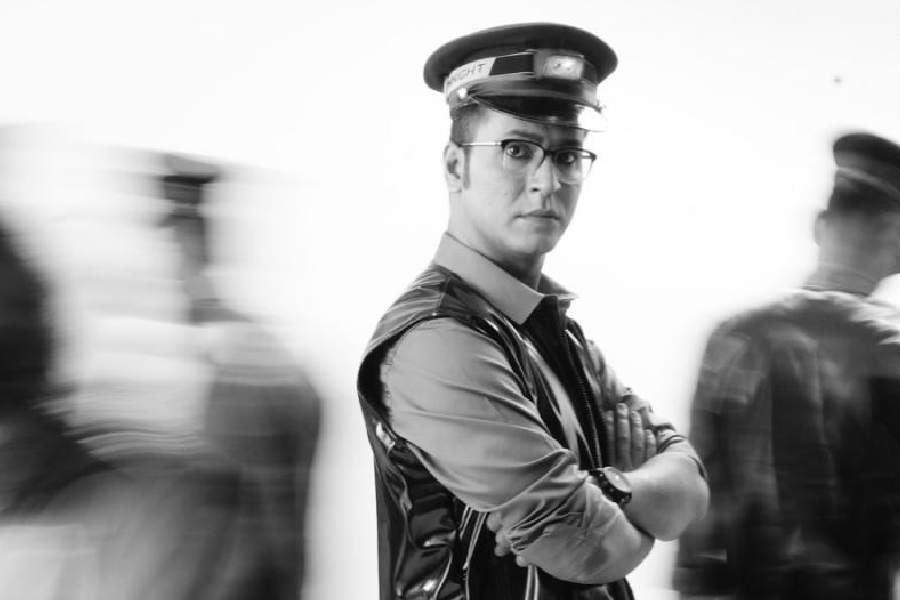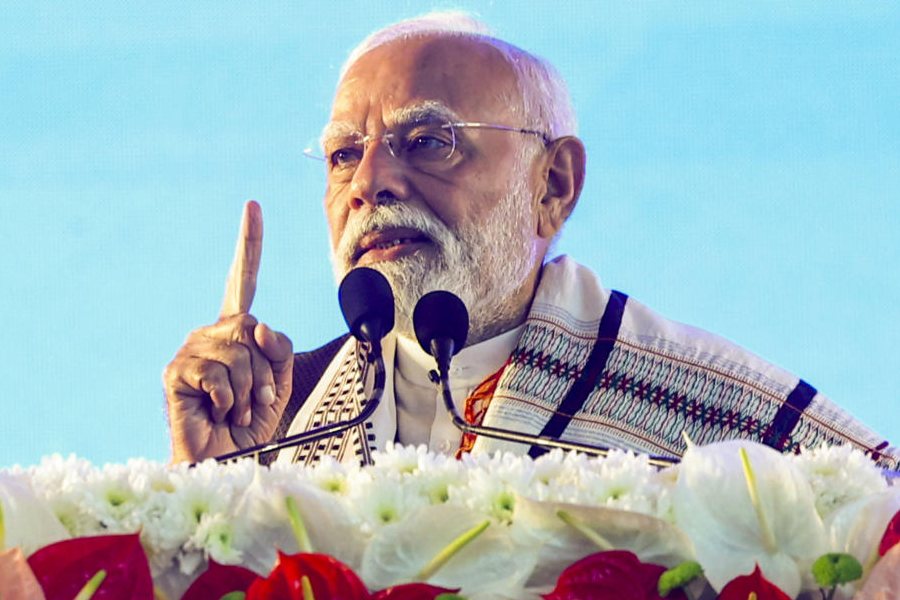In lavish praise of the purist
|
|
| Flashback: Jay Visvadeva |
No one in Britain is mourning the passing of Ustad Vilayat Khan more than Jay Visvadeva, who has been organising his UK concerts for over 30 years. Jay is upset and furious that newspapers in India and in Britain (where the news has been practically ignored) did not make more of the death of one of the greatest sitar maestros India has produced.
“Had Ravi Shankar died, it would have been page one news all over the world,” remarked Jay, making his position clear as to who he thought was the greater sitar player.
Memories flooded back as Jay sat in his spacious West London studio flat, from where he runs his two arts organisations, Navras Records and Sama Arts, and flipped through his precious collection of posters promoting Vilayat Khan’s early concerts in Britain.
Afterwards, we repaired for dinner across the road to Fairuz, a Lebanese restaurant, “where Khan Saab loved to have lunch before having a little rest in the afternoon”.
“Wherever you are, Khan Saab,” said Jay, raising a glass of red wine in tribute to the musician he admired above all others.
Jay got to know the musician as a man. “Khan Saab used to smoke a pipe in public but loved to have a bidi in private,” he laughed. “He liked antiques, Indian perfume, good food and fine clothes like English tweed. He was expensive but he gave few concerts and prepared for them for months. He was not one of those who flew in and flew out.”
Vilayat Khan was due to give a concert at the Symphony Hall in Birmingham on May 2, but now Amjad Ali Khan will probably take over. Jay will be attending memorial services for the departed musician in Calcutta on March 25, Mumbai on March 26 and at the Nehru Centre in London on April 27. “Khan Saab was a purist,” declared Jay. “He never compromised his own style. He was a true Indian.”
On one occasion, Jay and Khan were watching Anoushka Shankar give a TV interview. “Anoushka pulled down her jeans to reveal a tattoo,” said Jay. Anoushka was probably being playful but Vilayat Khan, remembers Jay, was not amused. “Ye hamara sabhyata hai? (Is this our culture?),” he commented sternly.
|
|
 |
| Bold and Beautiful: Models at the Satya Paul fashion extravaganza (above). Amitabh Bachchan’s waxwork model (below) |
Waxing eloquent
Amitabh Bachchan may not have been shown proper respect at the Zee Cine Awards in Dubai but in London, where the Indian crowd is much more discriminating, even his dummy is treated with izzat. When guests, dressed to kill, walked into Madame Tussaud’s last weekend for a Satya Paul fashion extravaganza, who should be at the head of the queue to greet them but the famous waxwork model of the Big B?
Mind you, when the apparition did not move and looked strong, sombre and silent, some guests were taken in and thought they were blessed with a vision of the real thing. Quite a few posed for a souvenir photograph alongside Bachchan’s waxwork model.
The only other Indian waxwork figure in the room was that of Mahatma Gandhi. The other Indian residents of Madame Tussaud’s — Indira Gandhi, Rajiv Gandhi and Narasimha Rao — have disappeared, probably because they are no longer considered important. Alas, how the mighty have melted.
Those wheeled out for the fashion show included Saddam Hussein and Col. Muammar Gadaffi, the Dalai Lama, Winston Churchill, Messrs Bush and Blair, standing next to each other like a California couple about to be joined in holy matrimony, and Sir Donald Bradman.
This was one of those occasions when the women looked as glamorous as the models imported from India. My knowledge of fashion, cuts, trends, cloth, embroidery, mark-ups etc. is even more tenuous than on most other subjects. But from where I sat, the clothes, especially the saris, and the models, most of them award-winning beauty queens — Nikita Anand, Ami Vashi, Shonali Nagrani, Shonal Rawat, Tina Chatwal and Gauhar Khan, according to the list provided by one of the organisers, Binita Dayal — looked stunning.
We should certainly have more Indian and Pakistani fashions shows in London, especially since there are financial institutions such as City Bank around to sponsor the designers. But if the designers want to become truly popular, they must do more than offer over-priced evening wear for rich wives who travel frequently to India, anyway, to replenish their bulging wardrobes.
Why buy a sari in London for £400 when you can get it in India for the rupee equivalent of £250?
The designers must make everyday garments for working women. To my untrained eye, Satya Paul’s Indian clothes looked exquisite, but its Western wear seemed poorly cut. Just as important, the designers shouldn’t forget 50 per cent of their potential customers. Men like nice clothes, too.
We are now being warned by Scotland Yard that a terrorist attack such as the one which killed 200 people and maimed over a thousand in Madrid could well take
place on the London Underground. Indeed, according to police, such an attack is 'inevitable'. Since the tube is used daily by three million passengers, the consequences do not bear thinking about.
Tony Blair promised the British people that the world would be safer after a war with Iraq. Then they were told the level of terrorism would decline once Saddam Hussein was caught.
And yet, as the Spanish discovered to their cost, the terrorist attacks have, if anything, gone up.
Police are asking passengers on the London Underground to be extra vigilant and report suspicious packages or movements. This is fine in theory but in the end, as we are learning rapidly, there is no defence in a Western democracy against the determined terrorist — and certainly not against one willing to die.
Blair and his wife and children have zzz class round-the-clock protection, as indeed they should, but following his decision to follow Bush into war against Iraq, the London Underground, which they don’t use, is a lot more dangerous for the rest of us.
|
|
| Encore: Lakshmi Mittal |
My one-time best friend Lakshmi Mittal is in danger of lapsing into good taste.
I was worrying how he would top son Aditya’s wedding when he hired the Victoria Memorial in Calcutta for the reception. I needn’t have fretted.
The word is that Mittal is hiring a romantic French chateau for daughter Vanisha’s wedding to banker Amit Bhatia. Given the line he is in, Mittal could keep out Hello! magazine paparazzi by building a ring of steel around the venue.
Talking of weddings, I spotted this letter in The Daily Telegraph, which shows that it is not only in India peo ple have time on their hands to write letters to newspapers. A Mr Robert Wilson of Broxbourne, Hertford shire, has written to offer 'my heart felt congratulations to Andrew Egan and Caroline Bacon on their engage ment'. He adds: 'May I offer a word of advice, that perhaps they should avoid the custom of combining their surnames once married. The result might be a bit of a mouthful.'
Very funny.
Sunetra Sarker, a 31-year-old actress, born in Liverpool of respectable Bengali parents, Sabyasachi and Bishka Sarker, a doctor and a dancer respectively who emigrated to
Britain from Calcutta, has caused a stir by doing a nude scene in a Channel 4 drama, No Angels, about naughty, bed-hopping nurses.
By contemporary Western standards, the scene is coy. Sunetra, who plays a character called Anji, was described thus in a survey which monitors nudity on TV: “Topless side view in a lovemaking scene astride a man on a bed — the side view of her right breast is seen but no nipple nudity.”
Last year, Sunetra married Nick Corfield, her stonemason boyfriend of long standing. In the cause of their careers, British Asian actresses cannot maintain their old cultural inhibitions. But no one can say that Sunetra is going boldly where no nice Bengali girl has gone before. The distinction of revealing the first Indian/ Bengali nipple on British TV is claimed by Rita Wolf in Hanif Kureishi’s 1985 film, My Beautiful Laundrette.














